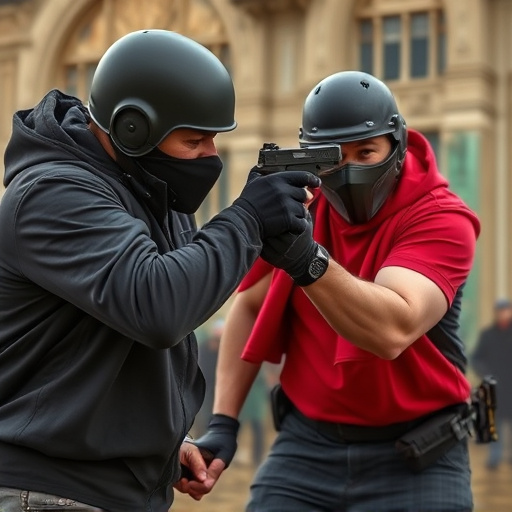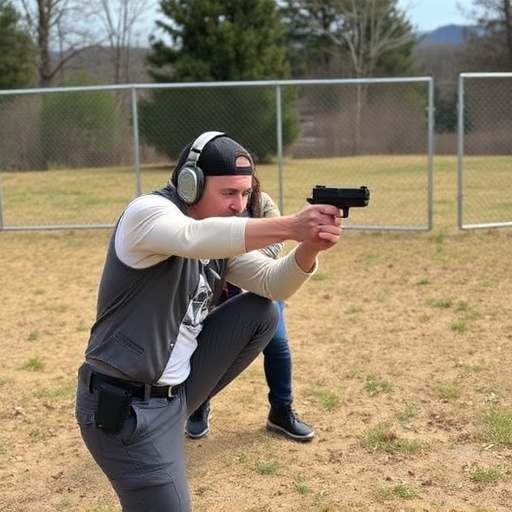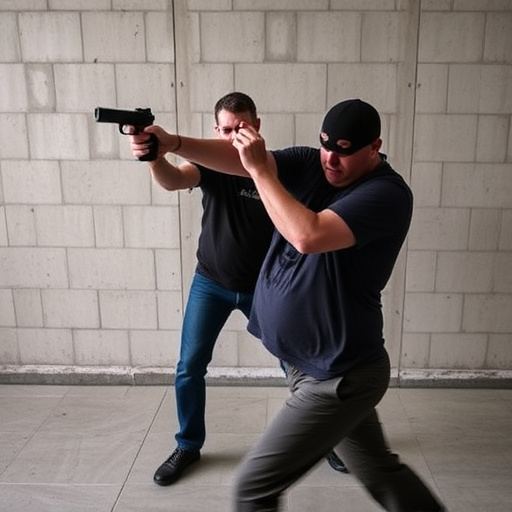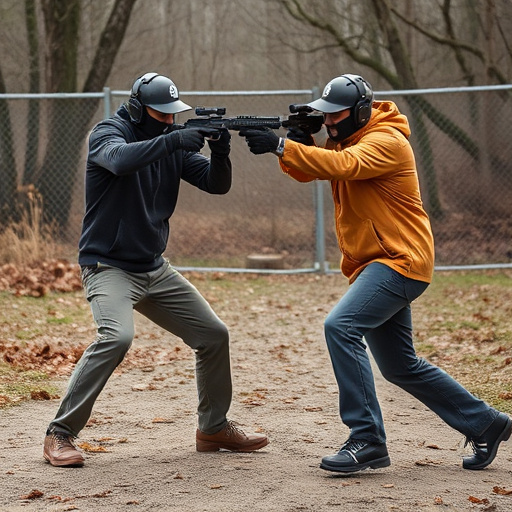The most concealable stun gun designs prioritize blending with everyday items like flashlights, keychains, or fashion accessories. These compact weapons feature innovative electrode placement for effectiveness while hidden and advanced materials to minimize bulk. Optimal electrode spacing of 1-2 inches ensures robust jolts without drawing attention, enhancing self-defense utility through surprise and discretion. Real-world testing confirms their reliability in stressful situations, making these stun guns a practical choice for personal safety.
Discover the secrets behind maximizing the effectiveness of your stun gun with strategic electrode spacing. This article explores how proper electrode placement can enhance stun performance, balancing power and discretion for the ultimate self-defense tool. We delve into concealment techniques, the art of electrode positioning, and real-world testing of the most concealable stun gun designs. Learn which factors influence optimal distance and unlock the key to choosing a discreet yet powerful stun device.
- Concealment Techniques for Stun Gun Design
- Electrode Placement: Key to Effectiveness
- Balancing Power and Discretionary Spacing
- Optimal Distance for Stun Gun Electrodes
- Testing Real-World Concealable Stun Guns
Concealment Techniques for Stun Gun Design

When designing a stun gun with optimal concealment in mind, the focus shifts from traditional weapon aesthetics to creating a device that can blend seamlessly into everyday objects or wearables. The most concealable stun gun designs often mimic the appearance of everyday items like flashlights, keychains, or even fashion accessories. For instance, a stun gun integrated into a stylish keychain or disguised as a pen could be easily carried without drawing attention. These concealed stun guns typically feature compact sizes and innovative electrode placement to ensure they remain effective while hidden.
The effectiveness of an electroshock weapon lies in its ability to deliver a powerful jolt with accurate targeting. In the context of concealment, this means strategically positioning electrodes to maintain performance despite reduced size. Designers achieve this by employing advanced materials and technologies that retain conductivity while minimizing bulk. The goal is to create a stun gun that remains operational even when hidden, offering users peace of mind and the element of surprise during self-defense situations.
Electrode Placement: Key to Effectiveness

Electrode placement plays a pivotal role in determining the effectiveness of a stun gun, especially in designs aimed at maximum concealment. In the case of most concealable stun guns, the electrodes are strategically positioned to ensure a strong current delivery while maintaining a low-profile form factor. This delicate balance allows users to deploy the device discreetly, making it a reliable option for personal safety without drawing unnecessary attention.
The spacing and arrangement of these electrodes directly impact the stun gun’s ability to disrupt an assailant’s nervous system. Proper electrode placement ensures that when activated, the stun gun delivers a powerful electric shock with minimal risk of excessive voltage dispersion or inefficient current flow. This meticulous design choice contributes to the overall performance and reliability of the stun gun, making it a game-changer in self-defense scenarios.
Balancing Power and Discretionary Spacing

In designing stun guns, striking a balance between power and discretionary spacing is paramount for maximizing effectiveness while preserving discretion. The optimal electrode spacing in a stun device plays a crucial role in ensuring both robust jolts and stealthy operation—a delicate trade-off that defines the most concealable stun gun design.
For such devices to be truly effective, electrodes must deliver sufficient current to incapacitate an assailant quickly. However, this power needs to be complemented by thoughtful spacing to minimize the device’s profile without compromising performance. This careful arrangement allows for a more subtle appearance, making it easier to conceal on one’s person, thereby enhancing the overall utility in self-defense scenarios where surprise and discretion are paramount.
Optimal Distance for Stun Gun Electrodes

The optimal distance for stun gun electrodes is a critical factor in determining the device’s effectiveness. In the pursuit of creating the most concealed and efficient stun guns, designers often strive for a balance between compactness and electrode spacing. A closer electrode spacing ensures more targeted and rapid numbness, enabling users to neutralize a threat swiftly. However, this design choice may compromise concealability, as smaller devices tend to have larger surface areas, making them more visible under clothing.
For optimal performance in a most concealable stun gun design, manufacturers recommend maintaining a distance of approximately 1-2 inches (2.5-5 cm) between the electrodes. This spacing allows for efficient current flow while still keeping the device discreet enough to be easily carried on a person’s body or hidden under clothing, making it a practical choice for self-defense purposes.
Testing Real-World Concealable Stun Guns

Testing real-world concealable stun guns is an essential step in evaluating their effectiveness and safety. The most concealable stun gun design often prioritizes size, weight, and blend with everyday objects to ensure users can carry them discreetly. These devices are designed to fit comfortably in pockets, purses, or even hidden compartments, making them easily accessible when needed.
During testing, various factors come into play. Range, power output, and the number of electrical contacts (electrode spacing) significantly impact stun gun performance. The ideal electrode spacing ensures maximum current flow with minimal resistance, increasing the likelihood of incapacitating a target. Real-world scenarios demand reliable operation under stress, confirming that these stun guns can deliver a powerful enough shock to subdue an attacker while remaining easy to operate in challenging situations.
In the quest for the most effective and concealable stun gun, understanding electrode spacing is paramount. Balancing power with discretion is key; optimal distance ensures a powerful jolt while maintaining a sleek, unobtrusive design. Testing real-world scenarios has confirmed that strategic electrode placement significantly enhances stun gun effectiveness. When incorporated into the design of a concealed weapon, these insights empower users to make informed choices, ensuring both safety and secrecy in self-defense situations. For those seeking the best in concealable stun gun technology, adhering to these guidelines is a step towards empowering oneself with a reliable, discreet self-defense tool.
